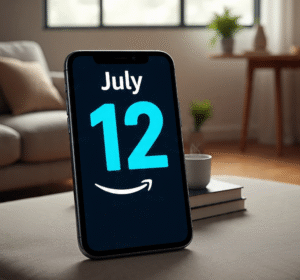
Blind charities in the UK have been integral in supporting individuals with visual impairments for over a century. These organisations have evolved considerably, transitioning from a focus on basic needs and welfare to providing sophisticated services and innovative technologies that empower the visually impaired. From advocacy and education to job placements and cutting-edge assistive tools, blind charities have expanded their impact, ensuring people with visual impairments can live fulfilling, independent lives. In this article, we explore how these charities have adapted to betterserve the visually impaired community over the years.
The Early Years: Welfare and Basic Support
In the early 20th century, UK charities for the blind primarily focused on welfare and basic needs. As many visually impaired individuals faced social isolation, poverty, and a lack of employment opportunities, charities played a key role in providing essential support such as housing, food, and vocational training. These efforts, though well-intentioned, often aimed more at subsistence than empowerment. Early blind charities operated in a society where opportunities for people with visual impairments were severely limited, and their work primarily aimed to alleviate hardship rather than fostering independence.
Expanding Services: Education and Advocacy
As the understanding of disability rights grew in the mid-20th century, UK blind charities evolved to offer more comprehensive services, with education and advocacy at the forefront. Acknowledging the importance of equal access to education, charities began to collaborate with schools and the government to ensure visually impaired children had access to braille textbooks, mobility training, and even inclusive classroom settings.
During this period, these organisations also became more vocal advocates for the visually impaired, pushing for legislative changes and raising awareness about the rights of disabled people. Landmark acts, such as the Disability Discrimination Act of 1995, were championed by many of these charities, ensuring better access to education, employment, and public services for the visually impaired.
Technological Advancements: A New Frontier
With the rapid growth of technology in the late 20th and early 21st centuries, blind charities in the UK embraced innovation to better serve their communities. The emergence of assistive technologies—such as screen readers, voice recognition software, and electronic braille devices—dramatically improved the lives of visually impaired people.
Charities began providing training on how to use these devices, ensuring that individuals could navigate computers, smartphones, and other modern tools independently. Leading charities collaborated with tech companies to develop more accessible digital platforms, apps, and resources.
In addition to assistive tech, the increased availability of audio resources, from audiobooks to descriptive audio services for TV and films, has made it easier for visually impaired people to access information and entertainment. Blind charities played a significant role in advocating for these inclusive media options.
Holistic Approaches: Empowerment through Independence
In recent years, blind charities in the UK have shifted toward a holistic approach, focusing on empowerment, self-reliance, and integration into broader society. Beyond providing resources and advocacy, these organisations now prioritise building self-confidence, leadership, and community engagement among visually impaired individuals.
One of the key focuses of modern charities is employment and career development. Charities such as Sight for Work and the Thomas Pocklington Trust run employment programs, providing career counselling, job placement services, and skill-building workshops for visually impaired individuals. These initiatives help individuals break barriers in the workplace, fostering greater independence and self-sufficiency.
Additionally, support networks have been expanded to include mental health services, peer groups, and counselling. Blind charities recognise that emotional well-being is as crucial as practical assistance, and many now offer comprehensive mental health support to visually impaired people.
Responding to the COVID-19 Pandemic
The COVID-19 pandemic presented new challenges for visually impaired individuals, particularly in accessing essential services and maintaining social connections. In response, UK blind charities quickly adapted by expanding their digital services, offering remote support through virtual workshops, telephone check-ins, and online resources.
Charities also worked closely with government bodies to ensure that visually impaired people had access to food delivery services, health information in accessible formats, and priority in receiving PPE. This quick pivot exemplifies how these organisations continue to adapt to unforeseen challenges while supporting the visually impaired community.
Conclusion
The evolution of blind charities in the UK reflects the broader societal shift towards greater inclusivity and empowerment for disabled individuals. From their early days of providing basic welfare to their current focus on advocacy, technology, and independence, these organisations have continuously adapted to meet the changing needs of the visually impaired community.
As new challenges and opportunities emerge, a blind charity will undoubtedly continue to play a vital role in ensuring that visually impaired individuals have the tools, support, and opportunities they need to lead independent and fulfilling lives. Through ongoing innovation and a commitment to advocacy, these charities remain indispensable to the people they serve.







